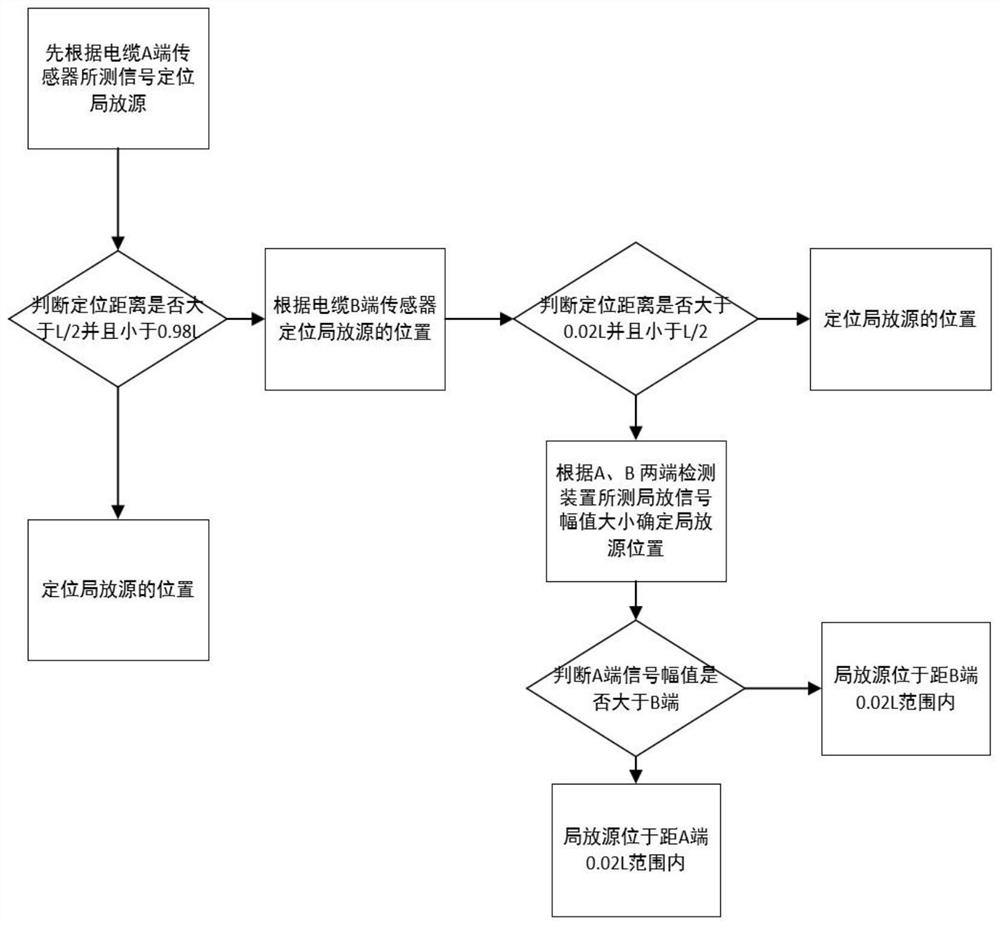Four-section type cable partial discharge source double-end monitoring and positioning method
A cable partial discharge and positioning method technology, which is applied in the direction of fault location and dielectric strength test, can solve the problems of large ambiguity of positioning results, signal attenuation, and positioning accuracy constraints, and reduce signal overlap, attenuation and scattering , to reduce the effect of signal attenuation
- Summary
- Abstract
- Description
- Claims
- Application Information
AI Technical Summary
Problems solved by technology
Method used
Image
Examples
Embodiment Construction
[0023] It should be noted that the embodiments in the present application and the features of the embodiments may be combined with each other in the case of no conflict. The present application will be described in detail below with reference to the accompanying drawings and in conjunction with the embodiments.
[0024] It should be noted that the steps shown in the flowcharts of the accompanying drawings may be executed in a computer system, such as a set of computer-executable instructions, and, although a logical sequence is shown in the flowcharts, in some cases, Steps shown or described may be performed in an order different from that herein.
[0025] like figure 1 As shown, this embodiment provides a four-segment cable partial discharge source double-ended monitoring and positioning method, including the following steps:
[0026] Monitoring devices are used on the left and right sides of the cable to obtain the partial discharge signal of the cable;
[0027] The cable...
PUM
 Login to View More
Login to View More Abstract
Description
Claims
Application Information
 Login to View More
Login to View More - R&D
- Intellectual Property
- Life Sciences
- Materials
- Tech Scout
- Unparalleled Data Quality
- Higher Quality Content
- 60% Fewer Hallucinations
Browse by: Latest US Patents, China's latest patents, Technical Efficacy Thesaurus, Application Domain, Technology Topic, Popular Technical Reports.
© 2025 PatSnap. All rights reserved.Legal|Privacy policy|Modern Slavery Act Transparency Statement|Sitemap|About US| Contact US: help@patsnap.com



